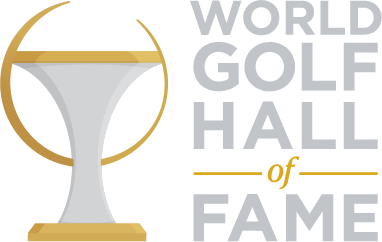By Travis Puterbaugh, Curator
In August 1989, a full 17 months before he would win his first tournament on the PGA TOUR, a Golf Digest headline posed the question “Is Phil Mickelson the Next Great Hope?”
A little over a year later in the same publication, golf scribe Jerry Tarde asked: “Is he the one?” In the same column, he answered his own question by saying, “in case you were wondering, Mickelson is the one.”
Evidence had started piling up that seemed to confirm the point of view shared by Tarde and many others in the golf world regarding the 20-year-old golf prodigy from southern California who won the NCAA Individual Championship as a freshman and a sophomore. In 1990, Mickelson became the first golfer since Jack Nicklaus to win both the U.S. Amateur and an NCAA Individual Championship in the same year.
His growing resume earned him a sponsor’s exemption in January 1991 to the Northern Telecom Open in Tucson, a little over 100 miles south of where Mickelson had been making a name for himself playing for Arizona State University in Tempe. Mickelson, who had finished inside the top 20 the previous year in Tucson and boasted a 29th place finish in the 1990 U.S. Open, already had proven he belonged despite only being a junior in college.
“I’m just not intimidated by the pros,” Mickelson said. “I’ve proven that I can play on this level.”
Mickelson proved just that in Tucson at the first full-field event of the 1991 season. He announced his presence by shooting an opening round 65, finishing just one shot behind Bob Tway and Hal Sutton. He followed with rounds of 71 and 65 to take a two-shot lead into the final round.
Leading the tournament heading into Sunday, the ASU psychology major put his education to use by assiduously avoiding the leaderboard-watching that takes place in the final round. Instead, he focused on his own game, putting out of his mind the names of professionals chasing him who could at any time upend the young contender.
While the likes of Tway, Tom Purtzer, and David Peoples sank their own chances late with ill-timed bogeys, Mickelson nearly joined them due to a crisis of his own making. For a long hitter like Mickelson, the 506-yard par-5 hole should not have given him any undue worry even while nursing just a one-shot lead.
After missing out of bounds to the left on his tee shot, the hole quickly went from bad to even worse. The Arizona desert is one of the last places you would expect to find, or even want to see a snowman, and the 14th hole proved no exception. Two drops, two penalty strokes, a bunker shot, and two putts later, Mickelson emerged from the 14th hole with a triple-bogey on the hole and the dreaded snowman (8). A one-shot lead had turned into a two-shot deficit, good for a fifth-place tie on the leaderboard behind Tway with only four holes remaining.
Yet again employing some of that college psychology, the mentally-tough Mickelson rebounded with a par on the 15th and birdie on the 16th to tie Tway for the lead, then birdied the 18th hole to claim the improbable victory over Tway and Purtzer by one stroke, finishing 1-under-par on the day for a 71.
“I never thought I’d see anyone come back from something like that,” said Corey Pavin, Mickelson’s playing partner during the final round.
Mickelson became the youngest amateur in modern golf history to win a professional tournament, the first since Scott Verplank at the 1985 Western Open, and only the fourth amateur in the past 47 years to win at the professional level. Over the course of a few holes, he traded in a snowman for the conquistador helmet awarded to the tournament winner.
“I went from having the biggest knot in my stomach,” Mickelson said, “to the greatest joy in a half hour.”
Although as an amateur he could not collect the first-place prize of $180,000, with his victory Mickelson earned an even more valuable two-year exemption on the PGA TOUR. He rounded out his 1991 by finishing low amateur at both the Masters and U.S. Open, earning second low amateur at the Open Championship, and making the cut at three additional TOUR events. He also won the Western Amateur and reached the third round of the U.S. Amateur.
Now 30 years after his first PGA TOUR win, Mickelson’s credits read as follows: 44 PGA TOUR victories (9th all time), five Major Championships (one of only 12 golfers ever to win three out of the four Majors), induction into the World Golf Hall of Fame, and a combined 24 appearances on Ryder Cup and Presidents Cup teams representing the United States. With wins on the PGA TOUR Champions in his first two appearances, the man once dubbed “The Next Great Hope” now seems poised to master yet another circuit for years to come.
